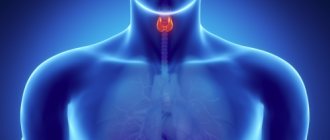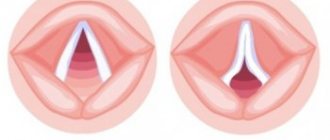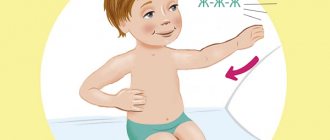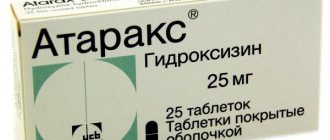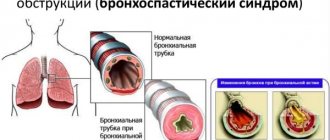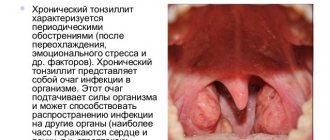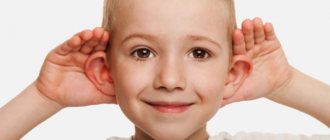Why do smokers cough?
People who smoke often have a cough that is not related to respiratory or infectious diseases. This symptom appears as a reaction to the penetration of toxic substances that irritate and disrupt the functions of the epithelium of the respiratory tract.
Cough from smoking is sometimes difficult to distinguish from manifestations of acute respiratory infections, bronchitis or pneumonia. Only with a thorough examination and exclusion of infection can its cause be identified.
If there is no obvious reason for the constant coughing in a person addicted to cigarettes, he is diagnosed with smoker's cough.
When they say that a child has a smoker's cough, it means that he has been bothered by coughing attacks for a long time. This does not mean for sure that the child has a nicotine addiction. After all, one cannot exclude the external influence of tobacco smoke, especially if one of the family members smokes.
Tobacco smoke contains several thousand harmful chemical compounds, some of which are poisonous. They are the cause of a constant cough that bothers experienced smokers, causing allergic and inflammatory reactions.
Soot and resinous substances settling in the bronchi irritate the ciliated epithelium and at the same time disrupt its movements. This leads to constant inflammation and the formation of a favorable environment for the proliferation of pathogenic microorganisms.
Due to constant exposure to hot smoke and irritation, the mucous epithelium is destroyed, increasing the likelihood of developing chronic diseases:
- asthma;
- chronic obstructive pulmonary disease;
- bronchitis;
- emphysema.
Most often, a smoker's dry cough appears after 3-5 years of daily smoking. Moreover, the rate of development of the symptom directly depends on the number of cigarettes smoked per day.
It is believed that if a person smokes more than half a pack per day, morning coughing can be observed already in the second year of nicotine addiction.
https://youtu.be/https://www.youtube.com/watch?v=paeqgLdcdtk
_
Causes, symptoms and features of bronchitis due to smoking
When a heavy smoker develops a strong cough, he chalks it up to a common cold, dry indoor air, or damp weather, but not to an addiction.
Nicotine contains dangerous substances that enter the lungs of a smoker with inhaled smoke. Among them are toxins such as formaldehyde, heavy metals, argon, methane and hydrocyanic acid.
In pulmonology and therapy, clinicians distinguish a separate disease, characterized by the presence of special symptoms and specific treatment tactics. In medicine, this disease is called “smoker’s bronchitis,” and its characteristic symptom is a cough.
Important! Smoker's bronchitis is a disease that affects not only people with a long history of smoking, for whom a pack of cigarettes a day is the norm. Inflammation of the bronchi due to irritation of the mucous membranes by nicotine also occurs in people who passively inhale cigarette smoke. Therefore, a smoking person causes significant harm not only to himself, but also to loved ones.
The disease “smoker's bronchitis” in all cases develops due to the effects of tobacco smoke on the bronchi.
Under the influence of smoke, some negative processes occur in the body of a smoker, namely:
- Tobacco smoke inhibits the process of renewal of goblet cells, so in people who have the habit of smoking, bronchial secretions are produced beyond measure.
- By killing ciliated cells, nicotine disrupts the process of natural cleansing of the organ and provokes inflammation of the bronchial epithelium.
- Symptoms of smoker's bronchitis also appear in those who are "passive smokers."
If, when symptoms indicating inflammation of the bronchi appear, smoking cessation is not immediately followed and appropriate treatment is not prescribed, the inflammatory process takes on a chronic form.
This condition is fraught with the following consequences:
- Development of chronic lung disease.
- Worsening of obstructive changes in the bronchi and lungs.
- Development of bronchial asthma (as a consequence of smoker’s bronchitis or other parallel disease).
- Development of pulmonary emphysema.
All these conditions have a chronic etiology and are incurable, however, in order to increase the quality and life expectancy of the patient, they can be contained.
Features of cough from cigarettes and additional symptoms
Chronic cough initially appears in the morning. Immediately after waking up, the mucus that has accumulated in the bronchi begins to clear, causing a slight cough. This cough disappears after smoking and does not return until the next morning.
Symptoms of smoker's cough:
- Initially, the attacks are episodic, gradually becoming more frequent.
- Body temperature remains within normal limits.
- There are no other signs of infection.
- Appears with strong inspiration and fast walking.
- Shortness of breath even in the absence of physical activity.
Over time, the symptom intensifies; a severe cough from smoking is accompanied by chest pain and mucus discharge. The sputum produced is usually clear in color, sometimes streaked with blood if the vessels in the respiratory tract are too weak. The appearance of yellow-green mucus indicates the addition of bacteria and the onset of infectious bronchitis.
What influences the development of bronchitis in a smoker?
The development of the disease in a smoker or a person passively inhaling cigarette smoke is influenced by many factors:
- Number of cigarettes consumed.
- Smoking experience.
- Gender and age.
- History of frequent bronchitis and ARVI.
- Genetic predisposition to bronchopulmonary diseases.
- Associated environmental and industrial factors affecting the general condition of the bronchopulmonary system.
- Lifestyle.
- State of the immune system.
Inflammation of the bronchopulmonary system in smokers is manifested by the following symptoms:
- A dry cough appears. At first, a person who smokes starts coughing in the morning hours. A severe cough in the morning is unproductive, infrequent and does not always appear. Therefore, due attention is often not paid to it. After some time, the cough becomes paroxysmal due to the large amount of sputum. But the sputum is too viscous, sticking to the bronchial mucosa, significantly complicating breathing, and it is impossible to cough it up. A person who smokes coughs often, loudly and violently, and this characteristic syndrome causes him considerable discomfort. If inflammation of the bronchi is advanced, as a rule, when coughing, secretions from gray and yellow to brown are released.
- Shortness of breath appears. The bronchi, clogged with mucus and sometimes spasmed, cannot perform their function. Initially, the smoker begins to feel a lack of air during active physical activity, but over time, such sensations appear at rest. Ordinary walking can provoke a state of expiratory shortness of breath. In advanced and severe cases, respiratory failure in smokers can occur even during sleep.
- The body experiences hypoxia. Due to the resulting dysfunction of the bronchi, all organs and systems of the smoker lack oxygen. Such serious pathological conditions lead to serious consequences, including changes caused by cell death. In this case, the brain and heart are the first to suffer.
- Immunity decreases. The resistance of a smoker’s body suffers first of all. He is more often susceptible to acute respiratory viral infections and other infectious and inflammatory diseases.
- The patient gets tired quickly. A disease such as “smoker’s bronchitis” takes all the patient’s strength. It deprives him of the opportunity to fully work, communicate with people and relax. At the same time, the smoker with a cough develops severe shortness of breath.
How to get rid of smoker's cough
The easiest way to relieve a cough and get rid of it altogether is to completely give up cigarettes and also avoid passive smoking. Experienced smokers find it difficult to get rid of their addiction, so it is recommended to use products that alleviate the symptoms of nicotine withdrawal.
It is difficult to get rid of a cough without quitting smoking, but you can make it feel better with medications.
How to treat smoker's cough and what medications to use depends on the severity of the symptom and the presence of complications.
Lozenges and lozenges
If the question arises of how to treat a smoker’s cough, then first of all you need to pay attention to lozenges and lozenges that soften the larynx and prevent the progression of inflammation.
What products can be absorbed:
- Faringosept;
- Strepsils;
- Grammidin;
- Agisept;
- Pectusin;
- Tonsipret.
Such medicines for smoker's cough are effective only for occasional attacks. If the symptom is severe and constantly disturbing, stronger medications will be required.
Cough expectorants for smokers
Tablets and syrups for a smoker's cough with bronchitis are prescribed when it begins to bother you constantly due to the discharge of phlegm that accumulates in the bronchi. It is better to select medications together with a doctor after examination and determination of external respiration function.
Cough tablets for heavy smokers:
- Bromhexine - thins mucus and improves expectoration, stimulates the expansion of alveoli, preventing emphysema.
- Ambroxol - have a more pronounced mucolytic effect than Bromhexine.
- Mucaltin is an inexpensive but effective smoker's cough tablet that reduces the viscosity of mucus.
- ACC (Acetylcysteine) – thins thick mucus, cleanses the bronchi, and has an antioxidant effect.
Preparations in the form of syrups are no less effective, and some of them have a combined effect, which allows you to quickly achieve the desired effect.
What cough syrups are prescribed for smokers:
- Doctor Mom is a herbal remedy with an expectorant, anti-inflammatory and decongestant effect.
- Biocalyptol - helps with dry, hysterical cough. It may slightly depress the central nervous system, causing lethargy and decreased reaction, and is therefore not recommended for the treatment of drivers.
- Gedelix - thins mucus and stimulates its release from the bronchi. Cannot be combined with antitussives.
- Gerbion - there are two types of syrup - with expectorant and mucolytic effects. Additionally, it has an immunomodulatory and antimicrobial effect.
- Erespal - prescribed for a high probability of bronchial asthma, severe inflammation and infection.
- Althea syrup - protects the mucous membrane of the respiratory tract, stimulates the regeneration of damaged tissues, relieves inflammation and promotes the removal of sputum.
In smokers, treatment of cough with medications is aimed only at alleviating symptoms. If you do not give up cigarettes, the cough will return constantly, provoking chronic obstructive pulmonary disease and other complications.
Drugs for dilation of bronchi
Long-term smoking makes it difficult to clear sputum, even if you take mucolytic and expectorant medications for coughing. This occurs due to the fact that obstruction develops, the bronchi narrow and retain mucus and tarry substances. To relieve spasms and expand the bronchial and pulmonary channels, the doctor will prescribe bronchodilators.
Names of drugs:
- Berodual;
- Atrovent;
- Fenoterol;
- Salmeterol;
- Theophylline.
Bronchodilators are usually available as inhalation solutions or aerosols, but also in tablet and injection form. Initially, it is recommended to start treatment with tablets, but if asthma or chronic bronchitis develops, specialists prescribe bronchodilators in the form of inhalations.
Medicines with a bronchodilator effect for a smoker’s cough are prescribed only by the attending physician, since it is necessary to take into account the severity of complications, age and the presence of concomitant diseases. It is especially dangerous to take drugs for severe pathologies of the cardiovascular system.
Treatment of smoker's cough with folk remedies at home
When treating people with nicotine addiction, preference is given to herbal preparations that have a thinning, anti-inflammatory and expectorant effect. They are used for oral administration, gargling and steam inhalation.
Recommended plants:
- plantain;
- marshmallow and licorice roots;
- thyme;
- oregano;
- thermopsis;
- ninesil (elecampane);
- coltsfoot.
Smoker's morning cough can be successfully treated with traditional medicine. But they are effective only in the absence of complications from the bronchopulmonary system.
What to do to make cough from cigarettes go away:
- Drink warmed milk with added butter and honey.
- Take decoctions of immunostimulating herbs: eleutherococcus, echinacea.
- Drink a mixture of milk and freshly squeezed carrot juice every day.
- When taking a bath or visiting a sauna, use essential oils of pine, fir or juniper.
- Rub the chest with camphor oil.
For chronic bronchitis of a smoker, it is recommended to boil 2 tbsp in half a liter of water. spoons of pine buds, leave for an hour and strain. Drink 50 ml every three hours for a month.
Treatment
Medicines based on natural and natural ingredients help get rid of smoker's bronchitis, promote better mucus discharge, and cleanse the lungs and bronchi of toxic substances. Expectorants and mucolytics are used for treatment. In advanced forms of the disease, antibiotics may be required - Ampicillin, Cefaclor, Fusidine.
Which tablets are effective for getting rid of smoker's cough:
- Bronchogen - used for the treatment and prevention of respiratory diseases in people with nicotine addiction, the course is designed for 30 days;
- Fluimucin - the drug helps eliminate mucus from the bronchi;
- ACC, Libexin are potent drugs for the treatment of non-infectious bronchitis; they can only be used under the supervision of a doctor.
Syrups such as Doctor Mom, Gedelix, and licorice root-based products help fight coughs due to nicotine addiction. These drugs soften cough and promote better sputum discharge.
During treatment, it is necessary to maintain a drinking regime - if there are no medical contraindications, then you should drink 3-4 liters of clean water per day.
Important! When using medicines with an expectorant effect, you should not swallow sputum - this can cause the accumulation of pus in the lungs; special equipment will be required for pumping out.
A smoker's cough can cause acute bronchitis, emphysema, abscess or lung cancer, pneumonia, tuberculosis, and pulmonary embolism.
How to get rid of smoker's cough with phlegm? After quitting the bad habit, the cough may get worse. Ambroxol will help relieve symptoms - the drug is effective for dry and wet coughs; it contains components that actively thin the mucus in the bronchi. The dose of the medicine is calculated at the rate of 1 mg/kg, it should be taken in 3-4 doses per day.
Is it possible to smoke with a cough and runny nose?
Few people care whether it is possible to smoke while coughing, so for most smokers, a common cold often turns into bronchitis or pneumonia. Substances found in cigarette smoke significantly reduce an already weakened immune system. This reduces the effectiveness of medications and
If you smoke while you have a cough or runny nose, viruses and bacteria begin to multiply rapidly and produce large amounts of toxic waste, increasing the load on your heart, liver and kidneys.
Smoking is especially dangerous when coughing with phlegm - tobacco smoke prevents the passage of mucus, causing complications and chronic diseases of the bronchopulmonary system.
Smoking with a cough and high body temperature leads to vasospasm. Even after one puff, the temperature can rise significantly, and it will be difficult to bring it down with the usual medications. This is due to the content of tars in tobacco smoke that can increase body temperature. Therefore, people with nicotine addiction are recommended to reduce fever with a combination of two drugs - an antipyretic and a vasodilator.
Got a cold? ARVI is an excellent reason to quit smoking. With respiratory diseases, taste sensations change, and tobacco smoke causes an unpleasant taste in the mouth. Therefore, it will take a little effort to stop smoking and make it easier to cope with the lack of nicotine.
Main symptoms
A smoker's cough is often confused with a cold. An addicted person does not even suspect that the habit has had a destructive effect on the respiratory system. Before choosing cough remedies, you should study the main symptoms of bronchospasm caused by smoking:
- A smoker's morning cough is suffocating. Awakening begins with the fact that a person experiences a lack of air. To restore breathing you have to take a vertical position;
- A smoker's sputum acquires a viscous structure and an unpleasant brown color. In particularly dangerous situations, pus or bloody drops may be observed. Coughing up blood requires immediate attention to specialists;
- shortness of breath appears at the slightest physical exertion, even the act of intercourse ends in lack of air and attacks;
- After smoking, the chest hurts - the patient complains that discomfort appears in any position of the body. Many people describe a burning sensation;
- decreased immunity - severe cough irritates the respiratory system. At the same time, the body ceases to resist viruses and bacteria. A heavy smoker gets sick at the slightest infection;
- Cell hypoxia is a common occurrence during smoking. A smoker's cough is a prerequisite indicating that organ cells are dying. The brain, lungs and heart are primarily affected. In this condition, the patient complains of memory loss and chest discomfort;
- Excessive fatigue is a common symptom of bronchitis in smokers. A person refuses to participate in various activities; he has only one desire - to go to bed.
On this topic:
What causes and how to treat dry paroxysmal cough
The symptoms of quitting smoking are similar to those listed above. The body is not able to instantly cleanse itself of the poisons that have accumulated throughout the entire period of nicotine abuse.
Treatment of smoker's cough: medications
Of course, the very first and most important stage of treatment is a complete cessation of smoking. It can be either gradual or abrupt, which depends on the willpower of the patient and the capabilities of his body.
It is impossible to quickly cure chronic bronchitis and other manifestations of nicotine intoxication. The development of COPD indicates the chronicity and irreversibility of the pathological process.
Effective cough syrups for smokers:
Herbion is a good remedy that copes with both dry and productive coughs, depending on the composition (with plantain and primrose, respectively). When taken orally, the drug has an immunomodulatory, expectorant and antimicrobial effect. To a lesser extent, Herbion relaxes the smooth muscles of the bronchial tree due to its thymol content. The medicine is prescribed at a dose of 10.0 ml three times a day, if necessary, the frequency of administration is increased to five times.
Treating smoker's cough
Smoker's bronchitis undoubtedly needs to be treated. Therapy should be comprehensive, after the volume of research carried out. Naturally, the first and most important step in treatment is for a person to quit smoking.
Important! If, as a result of smoking or for some other reason, your cough continues for three weeks or more, do not self-medicate, consult a specialist.
In addition to the required minimum of tests, you will be prescribed a lung x-ray and sputum analysis. Next, adequate therapy will be selected. Do not delay going to the doctor, this can negatively affect your health and lead to complications. In other words, the earlier treatment is started, the better the result.
How to cure smoker's cough? The main approaches are as follows:
- lead a healthy lifestyle, this includes complete cessation of smoking, walks in the fresh air, adherence to a daily routine and diet;
- strengthen your immunity;
- engage in physical exercise, if possible, gentle sports (taking into account the patient’s shortness of breath), perform a set of gymnastic exercises in the morning;
- directly – drug treatment prescribed by a doctor;
- physical procedures, massage;
- restorative treatment, vitamin therapy;
- traditional medicine.
How to treat smoker's cough? After a fluorographic or x-ray examination, tests, and, if necessary, consultation with a pulmonologist, patients are prescribed bronchodilators (dilators that dilate the bronchi), mucolytics (thin the mucus and facilitate its elimination), and antibiotics. Sometimes oxygen therapy is prescribed; in the presence of other diseases, complex treatment of concomitant pathologies is carried out. Treatment can be carried out on an outpatient basis, but in more severe situations hospitalization may be necessary.
Among the mucolytics, Bromhexine, Lazolvan, Ambroxol, ACC, Fluimucil can be used. Thanks to them, expectoration improves and, at the same time, sputum production increases.
The drug Tabex has a good effect; the active ingredient is cytisine. It affects the body like nicotine, suppressing the dependence on cigarettes in a person quitting smoking and reducing cough.
Among antibiotics, preference is usually given to drugs from the groups of fluoroquinolones (Levofloxacin, ofloxacin) and cephalosporins (Ceftriaxone, cephalexin). They have a wide spectrum of action, destroying bacterial microflora.
If the disease has progressed and the patient suffers from attacks of difficulty breathing accompanied by coughing, then in these cases broncho-obstruction occurs. Here one cannot do without prescribing basic therapy (seretide, symbicort), as well as short-acting bronchodilators to quickly eliminate such attacks (salbutamol). These drugs are used in the form of inhalers.
Important! If your cough is combined with periodic difficulty breathing, if shortness of breath progresses, do not experiment with medications. Treatment should be prescribed by a specialist (pulmonologist, therapist) after the examination. Self-medication can be dangerous to your health!
As an addition to the main treatment, it would be appropriate to mention traditional medicine. It is useful to use a decoction of expectorant herbs (sage, thyme, licorice root), and eat black radish with honey. A good remedy for the treatment of bronchitis is a collection of rose hips, chamomile flowers, linden flowers, plantain leaves, coltsfoot and many others.
The cause of a smoker's cough from a physiological point of view
Cigarette smoke contains many harmful, toxic substances. Our body itself is capable of eliminating unnecessary substances. Coughing is one of the ways of elimination. Smoke irritates the mucous membranes of the respiratory system. Substances from smoke in the form of soot and tar settle on the walls of the bronchi and lungs, which are responsible for gas exchange and supplying the body with oxygen. The ability to absorb oxygen decreases, hence shortness of breath. The work of the epithelium, which itself is capable of pushing out harmful substances, is inhibited. Its function is disrupted and the body tries to get rid of the excess in another way, with the help of a sharp muscle contraction when irritating the nerve receptors. This bronchial cough is accompanied by strong sputum production. Constant irritation of the bronchial epithelium leads to inflammation, chronic non-infectious bronchitis. The likelihood of getting infectious bronchitis increases, since the protective function in the lungs of a person who uses tobacco is greatly inhibited. Infectious bronchitis is protracted and difficult to treat. No scientific explanation can make you stop using cigarettes, but the development of infectious bronchitis often makes you rethink your attitude towards cigarettes.
List of sources
- Features of the microbiota of the respiratory tract in smoking patients: predictors of the formation of resistant microflora / Frolova A.K., Karamova F.A., Sholomov I.F. // Consilium Medicum - 2020 - No. 11.
- The influence of smoking on the course of chronic obstructive pulmonary disease: Abstract of the dissertation / Rakita D.D. — 2004.
- Babanov S.A. The role of tobacco smoking in the development of chronic nonspecific lung diseases (literature review). Healthcare of the Russian Federation. 2002; 1:53-5.
- Nikitina O. V. The role of active and passive tobacco smoking in the formation of respiratory diseases in children and adolescents // Abstract of the dissertation. -2011
- Baranov AA Tobacco smoking in children and adolescents: hygienic, medical and social problems and solutions /A. A. Baranov, V. R. Kuchma, I. V. Zvezdina. - M.: Litterra, 2007. - 216 p.
Drug treatment
It is impossible to completely cure a smoker's cough without stopping smoking. You can get rid of the pathology only by giving up cigarettes or using tobacco in another form (cigars, smoking pipes). But even those who continue to smoke can alleviate their condition with the help of medications.
Treatment is aimed at removing mucus and restoring the protective function of the epithelium. For this, expectorant tablets are used (sometimes a mixture or syrup is preferable due to higher digestibility). Along with these medications, medications are prescribed to improve lung function. Among the most commonly recommended medications for treating smoker's cough are:
- ACC is a product designed to thin sputum. By reducing the viscosity of mucus, expectoration becomes easier and the lungs clear faster.
- Codelac Broncho is a drug that, in addition to mucolytic and expectorant, also has anti-inflammatory and antiviral effects.
- Bronchogen is a medicine that improves the functioning of the respiratory system and prevents the development of complications. Use in combination with other drugs increases the effectiveness of treatment.
- Endoclin is a herbal preparation that stimulates coughing, promotes healing and restoration of the epithelium. Has a regenerating effect, improves blood microcirculation.
- Gerbion - herbal cough syrups (expectorant, mucolytic, affecting the mucous membranes).
In addition to these or similar remedies, other medications and physical therapy may be prescribed. In case of infectious bronchitis, antibiotics are indicated. Sometimes it is advisable to use antispasmodics, sedatives, and immunity boosters. People who quit smoking may be prescribed nicotine-containing medications.
Outdoor walks, breathing exercises, and aerobic exercises are recommended. It is necessary to balance your diet by including foods rich in vitamins and microelements.
Contact a pulmonologist who will prescribe a set of treatments and procedures individually based on your medical history and examination.
How does a cough develop?
It is necessary to say two points at once. The first point concerns the mechanism of the cough reflex in isolated cases. Beginning smokers know the situation: a person inhales tobacco smoke, coughs, and begins to experience shortness of breath and suffocation. This is a normal reaction of the body.
Tobacco smoke burns the lower respiratory tract with a whole bunch of chemical compounds and a reflex reaction occurs. Moreover, cigarettes and their older “brothers,” including the “safe” electronic smoking devices with mixtures so beloved by young people, contain a huge amount of frankly toxic substances, their number exceeds two hundred.
Over time, the lower respiratory tract becomes horny, the ciliated epithelium and cilia, designed to respond normally to pathological objects, become sealed with resins, atrophy and cease to perform their functions.
Smoke easily penetrates the lungs and destroys them along with the bronchi. At this stage, treatment no longer makes much sense. It will take a long time and is not guaranteed to lead to results.
What processes does a cough indicate?
The second point concerns the possible diseases that develop in smokers, especially heavy smokers. Cough itself is not a disease. This is just a symptom, but what pathological processes? We need to look into this in more detail.
Bronchial asthma
It is a chronic obstructive disease of the lower respiratory tract, during which the lumens of the bronchi narrow and suffocation occurs due to insufficient penetration of air into the respiratory tract.
The disease progresses in paroxysms, provoking a severe cough, and exacerbations become more frequent in the spring and autumn seasons. In smokers, the disease is caused by the pathological influence of tobacco.
The course of asthma worsens immediately after a person “tars.” Moreover, each subsequent attack is more severe than the previous one, which is a typical manifestation of asthma in a person who “indulges” in tobacco.
COPD
Chronic obstructive pulmonary disease is a real scourge of smokers. The essence of the pathological process lies in destructive and degenerative changes in the bronchi. They grow and atrophy, ceasing to adequately conduct air and contract in time with the natural respiratory movements of a person.
The pathology is characterized by an annoying wet cough, and suffocation and shortness of breath are also a constant companion for the patient. They always accompany a person and do not pass away. This affects both breathing and the general condition of the patient. This is the sad result of long-term smoking. COPD sets in faster, the more intensely the patient suffers from pain.
Emphysema
Emphysematous disease is relatively common among smokers. The reason is the destruction of the alveolar vesicles, which are designed to accumulate atmospheric air.
Over the years, tobacco smoke provokes alveolar atrophy. They become loose, weak, unable to adequately expand and contract (elasticity decreases).
A smoker often becomes disabled.
The result is rupture of the alveoli and the formation of voids in the lungs and bronchi, which are filled with air. The vital capacity of the pulmonary structures is significantly reduced, which affects the intensity of breathing. A characteristic manifestation is a cough in the morning, when the body assumes an upright position after sleep.
Bronchitis
Bronchitis of the destructive type, from the point of view of a person without medical education, is similar to chronic obstructive pulmonary disease. The symptoms are similar, the reasons for their formation are similar, as well as the mechanism. Differences are detected during radiography and magnetic resonance imaging. As a rule, both diseases go hand in hand with each other. Complex therapy is required.
Chronic pneumonia
Caused by a decrease in local immunity of the lower respiratory tract. As a result, the pathogenic flora, which is just waiting in the wings, is activated, infecting the lungs.
As a rule, such pneumonia is sluggish and accompanies the smoker for years without visible improvement. They often recur and have a short period of remission. Such inflammations of the pulmonary structures do not pose an immediate threat to life, with rare exceptions, and are always manifested by a cough with sputum.
Tuberculosis
Tuberculous lesions of bronchopulmonary structures in patients who smoke for a long time are observed most often. This is due to a decrease in local immunity. In such conditions, pathogenic flora, such as Koch's bacillus, feels most at ease. It provokes a smoker's constant cough with phlegm in the form of clots.
Tuberculosis can be recognized only after a series of studies (an x-ray will be especially informative).
The disease is insidious in that the symptoms in the early stages (from 3 weeks to 3 months) are little distinguishable from ARVI. Characterized by a slight increase in temperature, signs of general malaise (weakness, fatigue) and a wet cough.
Bronchiectasis
This problem is a cross between emphysema and COPD. The alveoli become filled with purulent exudate and cease to perform their functions. In this case, mandatory diagnostic bronchoscopy is required.
This study will allow you to examine the alveoli and, if necessary, begin treatment, which consists of washing the lower respiratory tract.
Reflux esophagitis
In addition, there are stomach problems, which lead to an additional painful cough. The main disease of this kind is reflux esophagitis. As a result of prolonged irritation by chemical compounds, the gastric sphincter ceases to close tightly. The pathology causes intense reflux of gastric contents into the lungs and lower respiratory tract in general.
The result is cough, burning, discomfort in the chest. Gastritis manifests itself in the same way with increased acidity of the juice.
Here are the most common diseases that provoke a smoker's cough. In severe cases, we are talking about oncology. Malignant tumors of the pulmonary parenchyma are most common in this location. Differential diagnosis is necessary.
